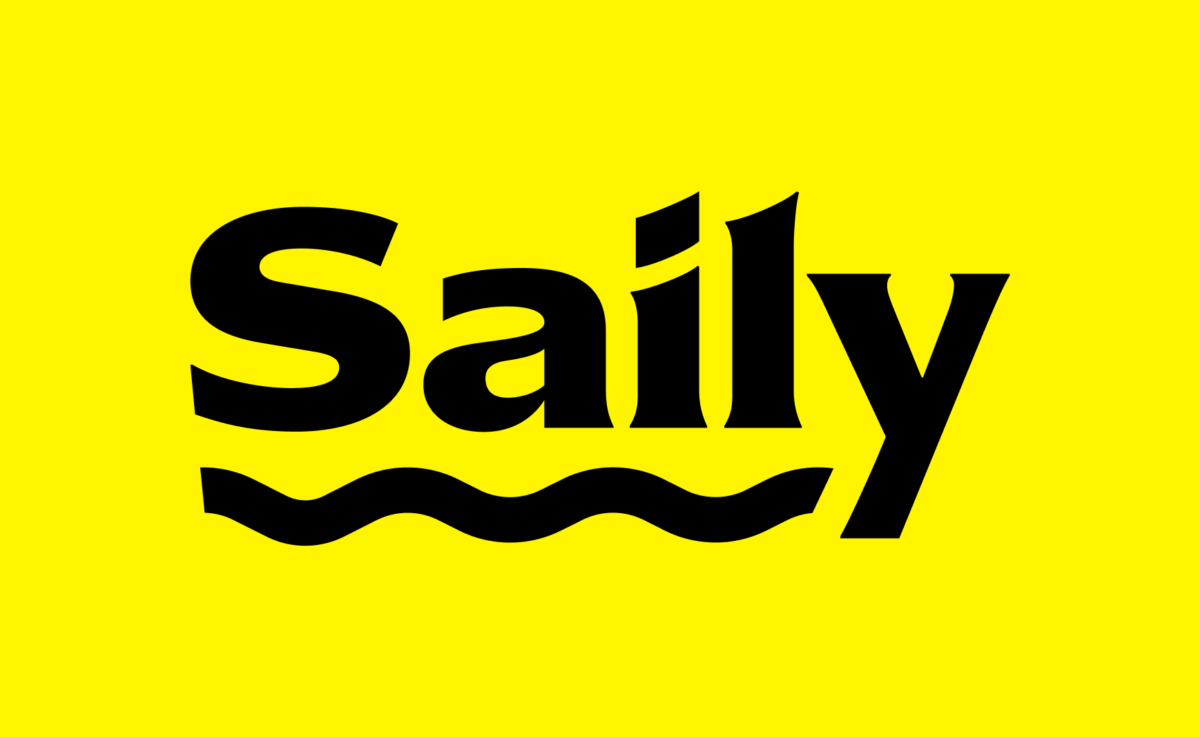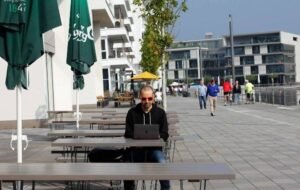
Digital Nomads- 5 Best Places in Germany
The 5 Best Places for Digital Nomads in Germany
Germany has many cities that are great for digital nomads, each with their own unique perks for different lifestyles. We’ll check out some of the best places for digital nomads in Germany, looking at key factors like internet speeds, cost of living, and the expat community.
You’ll discover useful info about the best places for remote work, including average WiFi speeds and ideal times to travel. This guide gives you a clear idea of where you can set up your digital office in Germany.

I have been travelling now for nearly three years. I left my 9-5 job in the UK and have never looked back. The one thing I would always advise anybody considering a nomad lifestyle is to just go for it! It will change you for the better. Music is my passion and I love to attend concerts of any variety but I do have a sweet spot for rock music.
Affiliate Disclosure: Some of the links on our site are affiliate links, meaning, at no additional cost to you, we may earn a commission if you click through and make a purchase. This helps us to continue providing valuable content and supports our efforts in bringing the travel community together. We only recommend products and services we believe in and think you’ll find useful. Complete details are included in our affiliate disclaimer. Thank you for your support!
In a Hurry? Here's our Key Info for This Article
- Munich offers a mix of culture and modernity, ideal for digital nomads
- Hamburg's port city atmosphere attracts remote workers
- Cologne combines history and innovation, offering great workspaces
- Frankfurt boasts excellent connectivity and business hubs
- Dusseldorf features a art scene and reliable internet speeds
Stay Connected
Things to Do
Essential Apps
Surfshark VPN
Stay safe online and continue accessing all your services just like back home.
Budget Tips
What is a Digital Nomad?
A digital nomad is someone who uses technology to work remotely while traveling. You might find yourself coding from a café in Bali or creating articles from a coworking space in Berlin. Digital nomads usually care about flexibility and being able to move around, picking places based on how good the internet is, how much things cost, and the vibe of the community. You don’t have to be stuck in an office, this way of life lets you explore different cultures and lifestyles.
All you need to do is look into the best spots to set up your temporary workspace and get on the plane. For example, Belgium has some awesome spots for digital nomads. Check out the Top Belgium nomad spots for a good comparison to the best places for digital nomads in Germany covered in this article. Finding the right mix of work and adventure is what makes this lifestyle tough but really rewarding.
The 5 Best Places for Digital Nomads in Germany
| Destination | Best for | Best Time to Visit | Average Wifi Speeds |
|---|---|---|---|
| Berlin | Startup Scene | May to September | 50 Mbps |
| Munich | Quality of Life | June to August | 45 Mbps |
| Hamburg | Cultural Experiences | May to September | 48 Mbps |
| Cologne | Historic Sites | April to October | 42 Mbps |
| Frankfurt | Financial Hub | May to September | 55 Mbps |
Always before setting off, make sure you are covered by some form of travel insurance. Safetywing is a good option and designed specifically for digital nomads on an extended journey.
1. Berlin – A Digital Nomad’s Dream
Berlin’s a city where you can enjoy a cool mix of history, modern vibes along with a lifestyle that is known across the world. If you’re a digital nomad, you’ll love how you can easily balance work and fun in this lively city.

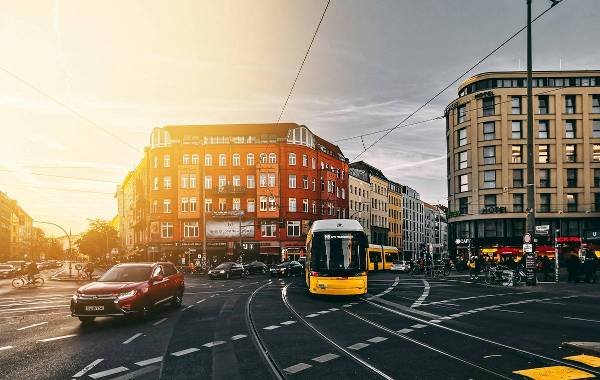
Top Attractions
There are so many cool places to check out in Berlin that fit all sorts of interests. Start by visiting the Brandenburg Gate, a famous landmark of German reunification. The Berlin Wall Memorial and East Side Gallery give you a powerful glimpse into the city’s divided history. If you love art, you’ve got to check out Museum Island with its five amazing museums. Tech enthusiasts will want to visit the Futurium, a museum all about future technologies. Don’t miss the nightlife at Berghain, one of the world’s most famous nightclubs. ForIf you’re looking for some nature, the Tiergarten park is a great spot right in the city. A great tour that you an do while in Berlin is the street art tour. Honestly, a fantastic tour if you are an art buff like myself.
Best Time to Visit
YouThink about visiting Berlin between May and September.ptember. During this time, the weather is lovely, perfect for enjoying the parks and beer gardens. Winter can get pretty cold, but you’ll love exploring the Christmas markets!
Local Cuisines
Berlin’s food is just as varied as its culture. Here are some must-try dishes:
– Currywurst: A Berlin staple, this is a sausage smothered in a tangy curry ketchup sauce.
– Döner Kebab: A popular street food, featuring spiced meat, salad, and sauces wrapped in flatbread.
– Eisbein: A traditional German dish of pickled ham hock, usually served with sauerkraut and mashed potatoes.
– Berliner Pfannkuchen: A sweet treat, these are jelly-filled doughnuts, often enjoyed during festive seasons.
Budgeting for Berlin
Berlin is pretty budget-friendly for a big capital city in Europe. Plan to spend about $50 to $100 a night if you want a decent place to stay. A meal at a mid-range restaurant will usually cost you around $15 to $30. Public transport here is efficient and doesn’t cost much, you can easily explore the city without breaking the bank.
2. Munich – The Heart of Bavaria
Munich is the capital of Bavaria and famous for containing both modern and traditional elements in every day life. You can enjoy a variety of cultural experiences, historical landmarks, and tasty food.
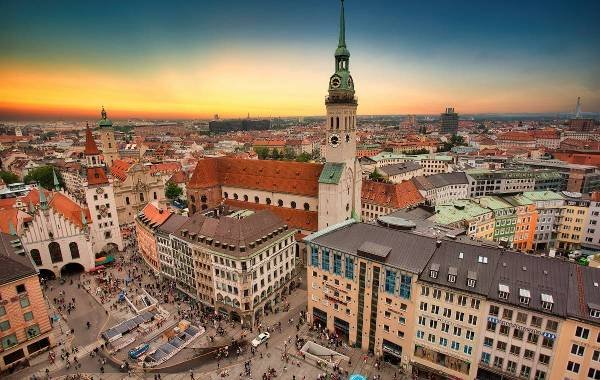
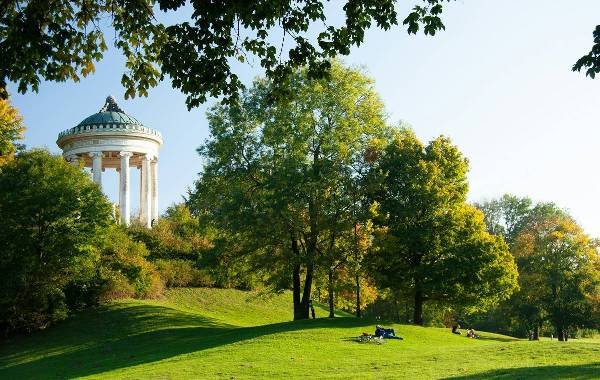
Top Attractions
MunMunich boasts a ton of attractions that fit all kinds of interests.rienplatz is right in the heart of the city and is famous for its amazing Glockenspiel show. The English Garden is one of the biggest urban parks globally and is a great spot for beautiful views and even river surfing! TheThe Nymphenburg Palace has beautiful baroque architecture and large gardens, this gives a peek into the royal Bavarian history. you’re an art lover, the Alte Pinakothek features amazing masterpieces ranging from the Middle Ages to the Rococo period. Make sure to check out the BMW Museum, where you can learn about the company’s history and see its future innovations.
Best Time to Visit
It’s a great idea to visit Munich in late spring (May to June) or early autumn (September to October). During these times, you’ll enjoy milder weather and lots of festivals, like the world-famous Oktoberfest. Summer tends to be crowded, and while winter is festive, it can get pretty chilly.
Local Cuisines
You’You should know that Munich’s food scene offers a good range of classic Bavarian dishes along with flavors from around the world.e are some must-try dishes:
– Weißwurst: A traditional Bavarian sausage made from minced veal and pork back bacon, often flavored with parsley, lemon, mace, onions, ginger, and cardamom.
– Pretzels: These large, soft, and salty bread snacks are a staple in Bavarian cuisine and are typically enjoyed with mustard or butter.
– Schweinshaxe: It’s a roasted pork knuckle that’s crispy on the outside and tender inside, usually served with potato dumplings and sauerkraut.
– Apfelstrudel: A popular dessert made of thinly layered dough filled with spiced apples, raisins, and a hint of lemon zest, typically served with vanilla sauce or ice cream.
Budgeting for Munich
You can have either an affordable or a luxurious experience in Munich, depending on what you like. You will want to budget around $100 to $150 a night for mid-range accommodations but look around as you can often find good deals – especially in local listings. Eating at a mid-range restaurant will usually set you back about $20 to $30 per person. If you’re looking to save some cash, you’ll find tasty and budget-friendly choices at local street food spots and markets.
As we discovered in when we looking into the top digital nomad spots in France A lot of the European countries can require a more budget-concious mind.
3. Hamburg – Best for Cultural Exploration
Hamburg is the second-largest city in Germany. It has a lively port atmosphere that’s really great to experience.

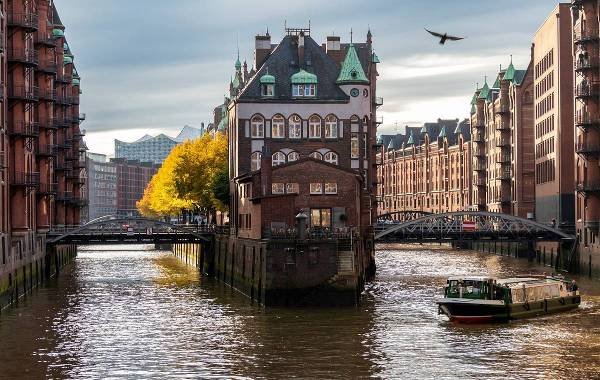
Top Attractions
You’ll find plenty of attractions in Hamburg that suit all sorts of interests. Make sure to visit the Speicherstadt, it isit’s the world’s largest warehouse district, and it’s a UNESCO World Heritage site.oIf music’s your thing, don’t miss the Elbphilharmonie—this concert hall is amazing and an architectural masterpiece! a walk in Planten un Blomen park to enjoy its beautiful gardens and fun water light shows. The Miniatur Wunderland, the world’s largest model railway, is captivating for all ages. If you’re into history, you can’t miss the International Maritime Museum; it reyou’ll really get to know Hamburg’s maritime past., check out St. Michaelis Church for some awesome views of the city!
Best Time to Visit
Wondering when to visit Hamburg? Let me tell you about the best times! Late spring and early fall are perfect for enjoying the weather! From May to September, you’ll get lovely weather that’s just right for checking out outdoor spots and festivals like the Hamburg Port Anniversary. Winter months can be chilly but provide a festive atmosphere with Christmas markets.
Local Cuisines
When it comes to food, Hamburg has a fantastic mix of flavors, both traditional and some more modern dishes. Since it’s a port city, Hamburg is known for its fresh seafood. Must-try dishes include:
– Fischbrötchen: A sandwich filled with fresh fish, onions, pickles, and remoulade, enjoyed by locals and tourists alike.
Labskaus is a must! It’s a filling dish with corned beef, potatoes, and onions, usually topped with a fried egg and pickled beets.
And don’t miss Aalsuppe! It sounds like it’s just eel, but it actually has lots of meats and veggies—sweet and savory at the same time!
– Rote Grütze: A traditional dessert made from red berries and served with vanilla sauce or cream.
Budgeting for Hamburg
Pricing in Hamburg can be pretty varied, depending on where you go. You can find hotel prices anywhere from $60 to $150 a night for decent places. If you’re eating at a mid-range restaurant, expect to spend about $20 to $35 per person. You might notice getting around is easy because public transportation is both efficient and really affordable; day passes cost about $8.
4. Cologne – The Heart of Culture
You can find Cologne right next to the Rhine River, and it’s one of the oldest cities in Germany. Its has some really iconic Gothic architecture and a fantastic arts scene, Cologne is a truly amazing spot that has plenty to offer travelers.

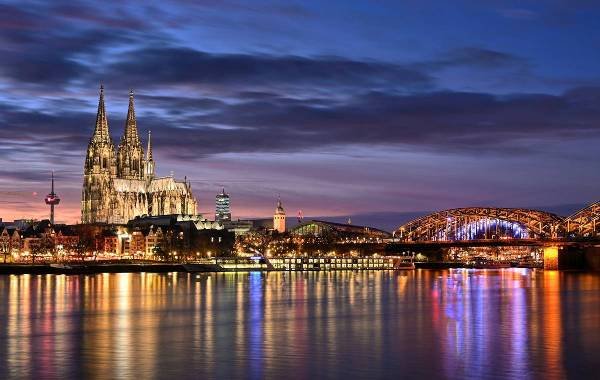
Top Attractions
Cologne has so many attractions that there really is something for everyone. You can’t miss the Cologne Cathedral, or Kölner Dom – it’s a must-see! It’s a UNESCO World Heritage site and a fantastic example architecture that is intriguing to see, plus the views from the towers are breathtaking! If you love art, the Museum Ludwig is definitely worth going to. It has an awesome collection of modern art, including pieces by Picasso and Warhol. The Romano-Germanic Museum offers a fascinating glimpse into the city’s Roman past with its extensive archaeological collection. To kick back and relax, take a stroll through the Old Town, see medieval buildings, and grab a coffee at a riverside café.
Best Time to Visit
Wondering when to visit Cologne? I’d say spring (April to June) and fall (September to October) are perfect for mild weather and fewer tourists. Don’t forget about the famous Cologne Carnival in February, it’s a lively event, but be ready for larger crowds and higher prices!
Local Cuisines
You’ll find an awesome food scene in Cologne, with a great range of classic German dishes and local favorites. Don’t miss out on these main dishes:
– Himmel un Ääd (Heaven and Earth): This dish is super comforting, made with mashed potatoes, apples, and black pudding.
– Rheinischer Sauerbraten: A marinated pot roast, typically served with red cabbage and potato dumplings.
– Kölsch is a local beer that’s light, refreshing, and comes in these cute little cylindrical glasses.
– Halver Hahn: Despite its name meaning “half a chicken,” it’s a rye bread roll with cheese, mustard, and pickles.
Budgeting for Cologne
In Cologne, you can find a variety of places to stay, with mid-range hotels usually costing about $100 a night. If you prefer to eat at a mid-range restaurant, expect to pay around $20 to $30 for your meal. You’ll find that it’s pretty affordable for all the cool cultural experiences waiting for you! If you’re looking for cheaper living options, check out some of Poland’s awesome spots for digital nomads.
5. Frankfurt – Best for Business and Culture
Frankfurt really brings together business and culture, and that’s what makes it such a cool place! With itsFrankfurt has a stunning skyline, it is also both – a financial hub and an art lover’s paradise.
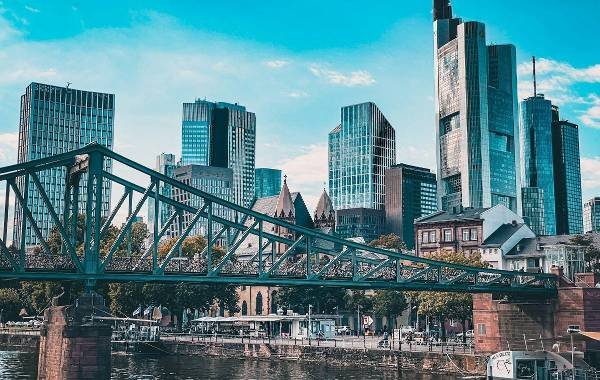

Top Attractions
Frankfurt earns its place as one of the best places for digital nomads in Germany as it has a bunch of attractions that will keep you entertained.our adventure at Römerberg, the city’s core, where you’ll be amazed by the medieval buildings. Next, maThen, head to the Main Tower for some fantastic views of the city from above.ers should not miss the Städel Museum, which houses works spanning over seven centuries. If you want a taste of nature, check out the Palmengarten, it’s one of Germany’s largest botanical gardens and a lovely escape from the daily grind. Science buff you’re into science, the Senckenberg Natural History Museum is awesome, it has an incredible fossil collection and exhibits.
Best Time to Visit
The best times to visit Frankfurt are in spring (April to June) and autumn (September to October). and pleasant weather, it’s perfect for outdoor activities and sightseeing. Avoid the winter months as it can get quite chilly and some attractions may have limited hours.
Local Cuisines
You’ll love how diverse Frankfurt’s food scene is, just like its people. Check out these must-try dishes:
– Apfelwein (Apple Wine): A local beverage similar to cider, often enjoyed in traditional taverns.
– Frankfurter Würstchen: Traditional sausages often served with bread and mustard.
– Grüne Soße (Green Sauce): A tangy herb sauce usually paired with boiled eggs and potatoes.
– Handkäse mit Musik: A regional cheese dish served with onions and vinegar, offering a unique taste experience.
Budgeting for Frankfurt
Keep in mind, Frankfurt can be a bit pricey. Expect to pay about $150 a night for a mid-range place. A meal at a mid-tier restaurant can cost around $30 per person. Don’t worry, the city has a lot of free or cheap things to do to keep your travel budget on track.
Packing tips to make your trip easier!
If you’re planning a trip to Germany as a digital nomad, being smart about what you pack can make a big difference. Start with reliable tech essentials. You definitely want a lightweight laptop with good battery life, especially if you plan to work from different cafes and coworking spots in cities like Munich or Hamburg. Don’t forget a universal adapter and a portable charger, as you’ll likely be on the go quite a bit. Since public transport is really convenient, it’s a good idea to pack a small, comfy backpack for your stuff.
Because the weather in Germany can be all over the place, layering is definitely important. Make sure to layer your clothing. Pack a mix of casual and smart-casual clothes since many expats in Germany often like to mix up work with social time. A waterproof jacket is a good idea, especially if you plan to check out outdoor spots in cities like Leipzig or Stuttgart. You’ll need comfortable walking shoes, whether you’re strolling through cobblestone streets or hiking out in the countryside.
Consider packing things that make longer stays a little cozier. Travel-sized toiletries, a reusable water bottle, and a small first-aid kit can really save the day. Get to know the local grocery stores and markets to lighten your load. And if you’re planning to explore other digital nomad hotspots, check out this guide to Digital nomad hotspots in Peru for additional insights. If you are in need of a compact camera than the Insta360 is a good option to bring along with you on your travels .
Other Places to Work Remotely in Europe
Concluding Thoughts to the 5 Best Places for Digital Nomads in Germany
Germany offers some awesome options for digital nomads! At this point, you probably have a decent idea of why Munich, Hamburg, and Berlin are great choices. Each city has a number of positives for digital nomads offering modern infrastructure, cultural essence, and amenities tailored to remote workers. Munich’s tech-forward environment, Hamburg’s creative scene, and Berlin’s eclectic mix offer something for every type of digital nomad.
If you’re thinking about moving, just keep in mind that Germany for the most part (Remote areas perhaps not so much) has fast internet, which helps you stay connected and get things done. It really is a place where you can balance work with a fun lifestyle. So, get ready to pack your bags and choose one of these cities as your new home. Trust me, you’re going to love it!
Germany’s 5 Best Places for Digital Nomads FAQ
Berlin, Munich, Hamburg, Cologne, and Frankfurt are the top choices for digital nomads due to their tech scenes, coworking spaces, and cultural activities.
Berlin is known for its diverse and inclusive community, affordable living costs, and numerous coworking spaces. The city also offers a cultural scene, making it a favorite among digital nomads.
Yes, non-EU citizens need a freelance visa to work as a digital nomad in Germany. The application process requires proof of income, health insurance, and a valid
Munich boasts several excellent coworking spaces like Impact Hub, Werk1, and Mindspace. These spaces provide high-speed internet, networking opportunities, and a professional environment.
Germany offers more urban options with robust tech hubs, while the best places for digital nomads in Iceland are ideal for those who prefer scenic landscapes and more remote work setups.


